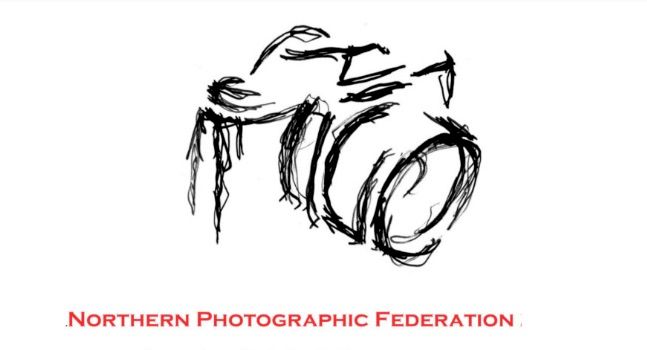The wrap up/and deals
Thank you all for participating it turned out to be a great weekend. All of the show specials from Benq, Sony and C R Kennedy (the awesome tripods and the lights etc) will remain active till 06/08/2023 or next Sunday. All you need to do is send an email(see attached)before the cut off. We have created a facebook group to post your images too, it also means the models get to see your shots as well. See you all next year.
Regards Brad

by Brad Le Brocque, August 1, 2023
Results for competitions in NPF 2023
There were 6 entries that were rated the highest by our judge(s).
| Morning Light Rita England – 1st Place Colour Print 
| Surfers Halo Peter John O’Brien – 1st Place Mono Print 
|
| Dandelion Feast David Price – 1st Place Nature Print 
| Whooo are you Podargus strigoides Trevor Cotterill – 1st Place Open Digital 
|
| Helping Grandad Dianne English – 1st Place People Digital 
| Approaching Bee Janet Payne – 1st Place Macro Digital 
|
by Petro Holowinskyj, July 31, 2023
NPF time changes
Because of an event that will run late on Friday we can not start setting up until 7-8pm. So for those helping to set up i will be at the club for dinner about 6pm and we can work from there.
Club will now open 9am on both Saturday and Sunday, Please do not arrive early, the doors will not open till 9am. So the current program will run 30 minutes behind……The best laid plans… etc
by Brad Le Brocque, July 27, 2023
Another chance to win
If sony know they are getting a good response for their efforts then they are likely to give us continued support. They are offering a chance to win another camera(A7lV) by registering here for Michelle’s talk, Its free https://scene.sonyanz.com/events/looking-through-the-layers-npf-presentation

by Brad Le Brocque, July 27, 2023
BENQ now attending

by Brad Le Brocque, July 25, 2023
2nd Major Prize!!

Sony are providing a camera and lens package worth almost $3000.00 to give away over the weekend….you have to be there to qualify, thats all you need to do.

And a big Npf thankyou!, to John Ralphs Camerahouse and Sony advocate Michelle kennedy for their work with Sony to bring this to fruition, We all appreciate your efforts.
by Brad Le Brocque, July 24, 2023
2023 PROGRAM
The program for the NPF weekend is below. If there are changes to the programs updates will be posted.
by Debbie Sutton, July 14, 2023
Only one more sleep till entries close
The window to enter the 2023 Npf will close tomorrow night 02/07/2023 11:59pm. The program for this year is shaping up nicely and should be released soon. If you are going to enter this year and you think you work better with a bit of stress……..It’s time to PANIC!
by Brad Le Brocque, July 1, 2023
Major Prize Announced
Northern Photographic Federation
STUDIO SHOOT SESSION
Your job, should you choose to accept it is to shoot a portrait in the iFootage portrait studio
using the models provided or one of your choosing. To do this you have two iFootage LED
lights, soft boxes, dishes and snoots but only fifteen minutes to execute your vision. The
winners, as judged (by world famous people photographer Tim Bauer), will win the studio!!, that’s right- 2 x iFootage 300w lights with stands, 2 x softboxes, 1 x savage backdrop with backdrop
stand included, a beauty dish and a full days training with Tim Bauer himself!
Conditions:
Contestants must be registered participants in the NPF weekend
Each contestant may only book one 15 minute time slot
To register your interest and be allocated a time slot visit the NPF website and use the green
button on the home page. The cost is $20.00
The session will be a ‘closed studio shoot’. The photographer must work on their own. There
will be a light operator provided, but no creative input will be allowed
Portraits must be of the upper body (waist up)
Models must be over eighteen
Photographers can bring their own talent and styling or use models provided
Yes, you can borrow cameras and lenses from the suppliers if you wish, or use your own
Winners will be announced during the Presentation Ceremony on Sunday afternoon.
Contestants must be present on the Sunday to claim their prize.
Judging criteria is based on the creative vision not technical expertise (you will learn that
later)
Beginners are encouraged, help to run the lights will be provided
There will be two runners up prizes of a place at the full day training with Tim Bauer.
Time slots will be published 9:30am Saturday morning at the NPF.
First shoot starts at 10am Saturday and depending on demand we may go late Saturday
night.
Files MUST be presented as JPEG sRGB, sized camera club standard (1920X1200) and
maximum of 3MB.
The single final image of your choice must be presented to the studio administrator on USB
stick by 1pm Sunday
The fifteen minute time limit will be measured via countdown timer and will be strictly
enforced- the power to the lighting will be turned off at the fifteen minute mark.
Very limited places so register NOW!
by Brad Le Brocque, June 28, 2023
Four days to enter
NPF 2023
29th-30th July
The trophies are ready for this years names, and with only four days to go till entries close it’s time to upload your images. We have a load of amazing prizes to give away this year and we have an excellent roster of presenters to keep you entertained over the weekend. Most of the Companies attending will have unbeatable specials available at the event. Keep an eye out for the program it should be released about 2 weeks before the event. I look forward to seeing you all.
Regards Brad
by Brad Le Brocque, June 28, 2023













